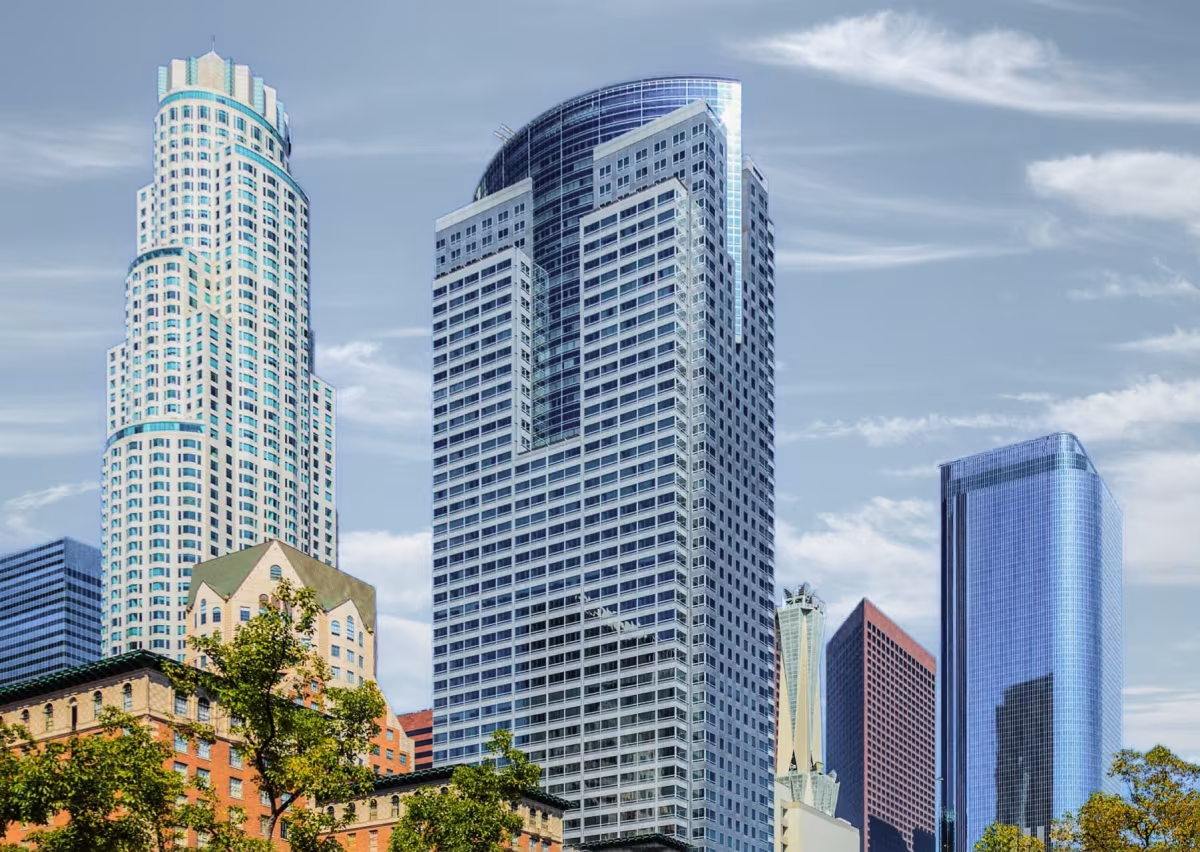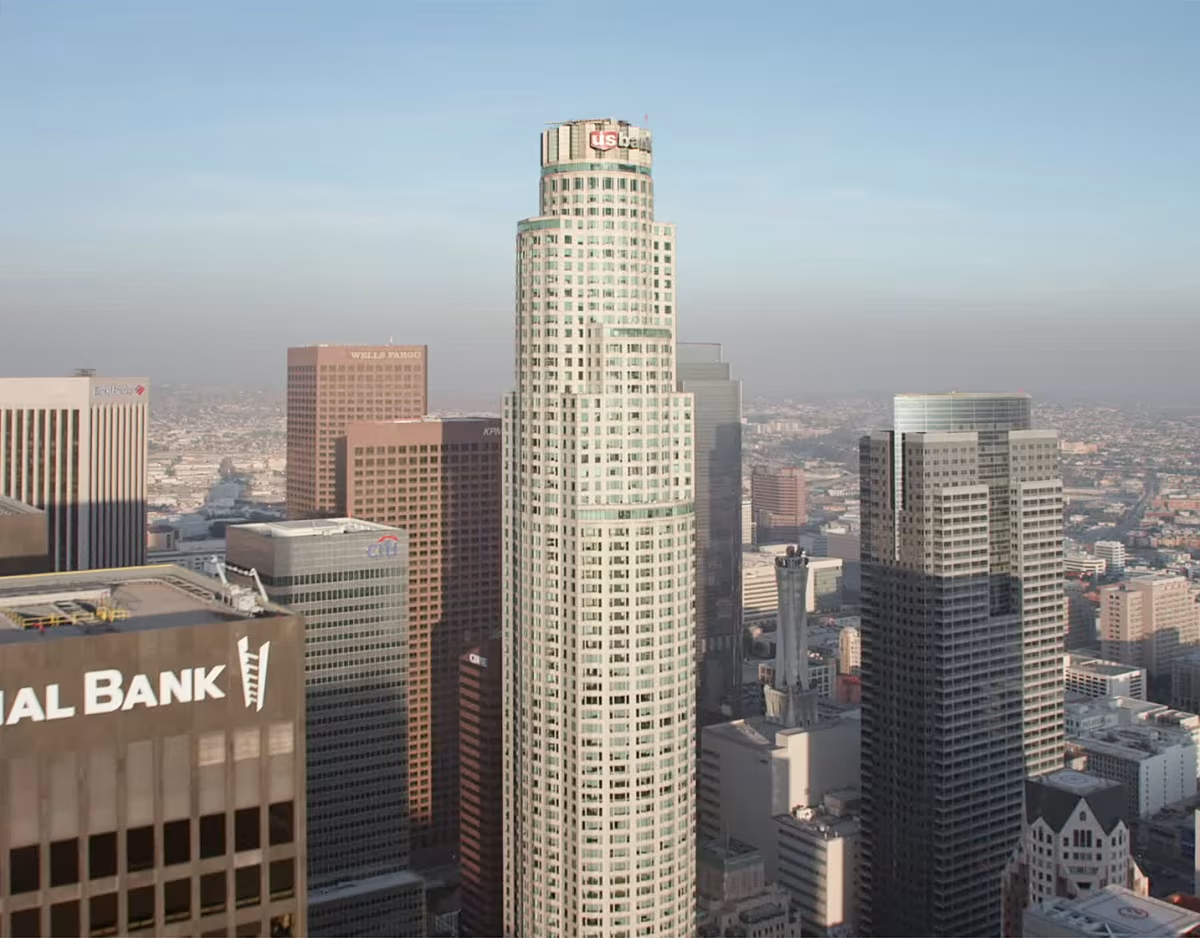Gas Company Tower vs U.S. Bank Tower


Comparing the Gas Company Tower and the U.S. Bank Tower is interesting because they both stand in Los Angeles, CA, and were completed within 2 years of each other, but they were designed by different architects.
This offers a unique glimpse at how rival designers approached projects in the same city during the same era.
Height & Size
The U.S. Bank Tower is clearly the larger tower of the two, both in terms of height and number of floors. It rises to 1017ft (310m) with 73 floors above ground, while the Gas Company Tower reaches 748ft (228m) with 52 floors above ground.
Despite being taller and having more floors, U.S. Bank Tower has less total built-up area than Gas Company Tower.
By contrast, the U.S. Bank Tower sits on a site with a lower floor area ratio.
Of course, each project may have faced different briefs or regulatory constraints, which we don't really know about and could also explain the outcome.
Architectural Style
Both the Gas Company Tower and the U.S. Bank Tower were designed in line with the aesthetic conventions of the Postmodernism style.
The Gas Company Tower was designed at a moment when the Postmodernism style was already in decline, making it more of a lingering expression of the movement. In contrast, the U.S. Bank Tower style was already in decline, making it more of a lingering expression of the movement. In contrast, the U.S. Bank Tower was built when the style still carried greater cultural weight.
Uses
Both the Gas Company Tower and the U.S. Bank Tower were designed to serve as commercial towers, and that has remained their main use since their completion, serving similar roles in the urban fabric.
The U.S. Bank Tower also provides 1396 parking spaces.
Structure & Facade
The two towers rely on different structural systems, reflecting distinct engineering strategies.
The Gas Company Tower uses a Frame structural system, which relies on a regular grid of columns and beams to sustain its weight, while the U.S. Bank Tower uses a Framed Tube In Tube system, that combines a strong central core with a perimeter tube of columns.
Yet, when it comes to their facade, they both employed the same solution, a Curtain Wall facade.
A curtain wall is a non-load-bearing facade hung from the structural frame. It is anchored to floor slabs and transfers only its own weight and wind loads, allowing for sleek, glassy exteriors.
| Gas Company Tower | U.S. Bank Tower | |
|---|---|---|
| Skidmore, Owings & Merrill | Architect | Pei Cobb Freed & Partners |
| 1988 | Construction Started | 1987 |
| 1991 | Year Completed | 1989 |
| Postmodernism | Architectural Style | Postmodernism |
| Commercial | Current Use | Commercial |
| 52 | Floors Above Ground | 73 |
| 8 | Floors Below Ground | 2 |
| 228 m | Height (m) | 310 m |
| 165530 | Built-up Area (m²) | 163000 |
| 28 | Number of Elevators | 44 |
| Frame | Structure Type | Framed Tube In Tube |
| Steel | Vertical Structure Material | Concrete And Steel |
| Concrete | Horizontal Structure Material | Concrete |
| No | Facade Structural? | No |
| Glass, Steel | Main Facade Material | Glass, Aluminum |
| Turner Construction | Main Contractor | Turner Construction Company |
| Thomas Properties Group | Developer | Maguire Partners |
| CA | State | CA |
| Los Angeles | City | Los Angeles |
| 555 West 5th Street | Address | 633 West Fifth Street |